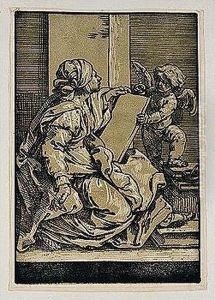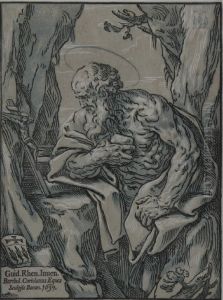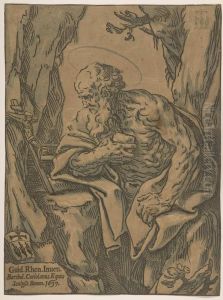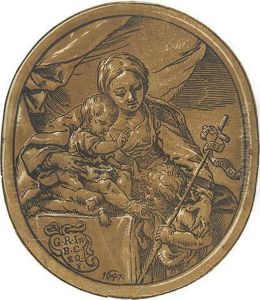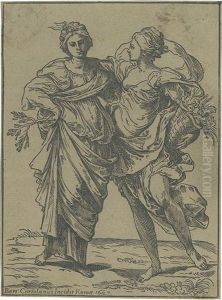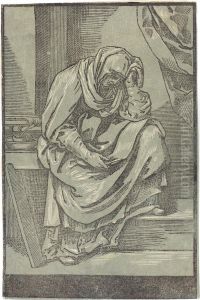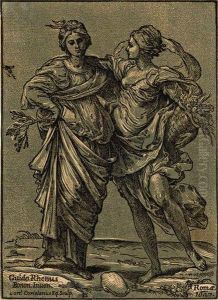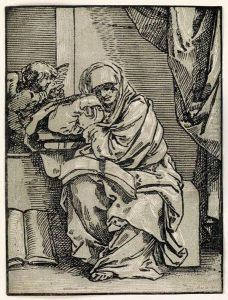Bartolommeo Coriolano Paintings
Bartolommeo Coriolano was an Italian engraver of the Baroque period, born in 1599 in Bologna, Italy. He is known to have been active mainly in his hometown, although specific details about his early life and training are scarce. His work reflects the artistic traditions of the time, which were characterized by dramatic expression, rich decoration, and intense emotion. Coriolano was a contemporary of other notable artists such as Guido Reni, whose influence can be seen in his engravings.
Coriolano specialized in the technique of chiaroscuro woodcuts, which involve the use of multiple blocks to create a single image with a rich interplay of light and shadow. This technique was particularly well-suited to the Baroque aesthetic and allowed Coriolano to produce prints with a sense of depth and volume unusual for the time. His subjects were often religious, but he also produced portraits and mythological scenes, which were popular among the collectors of his day.
One of his most significant contributions to the art world was his collaboration with Guido Reni, for whom he produced prints based on the painter’s works. These engravings helped to disseminate Reni’s compositions to a wider audience and contributed to the painter’s posthumous reputation. Coriolano’s prints were collected not only in Italy but also across Europe, attesting to their appeal and the skill of their creator.
Coriolano's work as an engraver was part of a larger cultural movement in Bologna that included the Carracci family and their academy, which played a pivotal role in the development of Baroque art. Although Coriolano did not achieve the same level of fame as some of his contemporaries, his engravings remain an important part of the historical record of Italian printmaking.
Bartolommeo Coriolano’s date of death is often listed as 1676, although there is some uncertainty regarding the exact year. His work, particularly his chiaroscuro woodcuts, continues to be studied by art historians and appreciated by collectors for their technical mastery and beauty. Coriolano’s legacy is that of a skilled craftsman who contributed to the rich visual culture of his time and helped to immortalize the works of other artists through his meticulous engravings.
